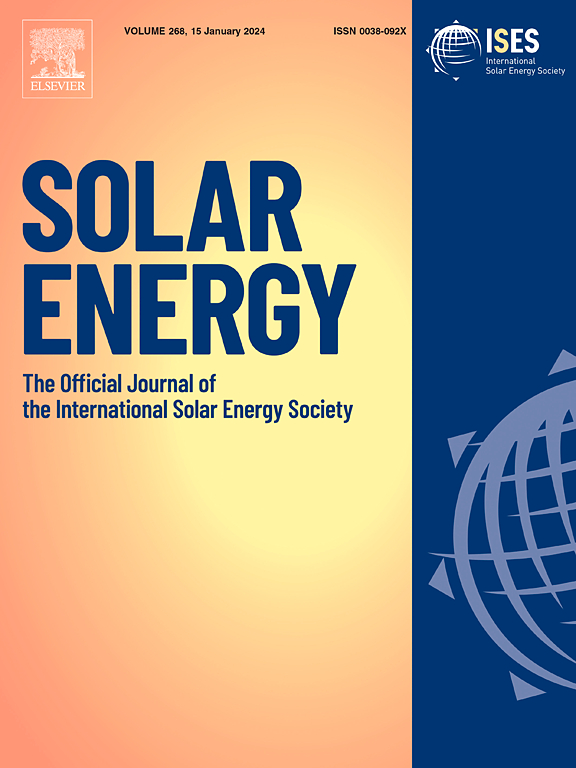不同云和气溶胶情景下中国hima -9向下地面短波辐射(DSSR)产品的评估
IF 6
2区 工程技术
Q2 ENERGY & FUELS
引用次数: 0
摘要
Himawari-8/9上搭载的先进Himawari成像仪(AHI)可提供中国上空5公里、10分钟高时间分辨率的地面短波辐射(DSSR)。为了评估卫星DSSR在不同天气条件下的适用性,本研究利用中国气象局(CMA)站点的地面测量数据对Himawari-9 DSSR产品在中国的性能进行了评估。在不同的云光学深度(COD)和不同的气溶胶光学深度(AOD)情景下,评估DSSR产品的质量。总体而言,每小时AHI DSSR与地面DSSR具有较高的相关系数(R = 0.88, RMSE = 143.13 W/m2), 84%的站点R大于0.8,70%的站点RPE小于0.4。然而,随着云量和气溶胶水平的增强,卫星观测差异增大,相关系数从0.92(晴空)降至最低的0.31 (COD >;从0.92(0≤AOD≤0.1)到0.82 (AOD >;分别为2)。本研究为利用“hima -9”DSSR产品提供了科学依据,同时也凸显了特定天气条件下数据质量的局限性。本文章由计算机程序翻译,如有差异,请以英文原文为准。
Assessment of the Himawari-9 downward surface shortwave radiation (DSSR) product in China under different cloud and aerosol scenarios
Advanced Himawari Imager (AHI) aboard Himawari-8/9 can provide downward surface shortwave radiation (DSSR) over China with 5 km and a high temporal resolution of 10 min. In order to assess the applicability of DSSR from satellites for different weather conditions, the performance of Himawari-9 DSSR product in China is evaluated using ground measurements from stations of China Meteorological Administration (CMA) in this study. The quality of the DSSR product will be assessed under different cloud optical depth (COD) as well as different aerosol optical depth (AOD) scenarios. The overall comparison of hourly AHI DSSR and ground DSSR shows a high correlation coefficient (R = 0.88, RMSE = 143.13 W/m2), 84 % of the stations exhibit an R exceeding 0.8, and 70 % show an RPE below 0.4. However, the satellite observational discrepancies grow as cloud cover and aerosol level intensify, with the correlation coefficients dipping from 0.92 (clear sky) to the lowest values of 0.31 (COD > 50) and slightly decreasing from 0.92 (0 ≤ AOD ≤ 0.1) to 0.82 (AOD > 2), respectively. This study offers a scientific foundation for utilizing the DSSR product of Himawari-9, and highlights the limitations of the data quality under specific weather conditions.
求助全文
通过发布文献求助,成功后即可免费获取论文全文。
去求助
来源期刊

Solar Energy
工程技术-能源与燃料
CiteScore
13.90
自引率
9.00%
发文量
0
审稿时长
47 days
期刊介绍:
Solar Energy welcomes manuscripts presenting information not previously published in journals on any aspect of solar energy research, development, application, measurement or policy. The term "solar energy" in this context includes the indirect uses such as wind energy and biomass
 求助内容:
求助内容: 应助结果提醒方式:
应助结果提醒方式:


